 In 2012, the Scottish Parliament voted to introduce a minimum unit price for alcoholic drinks. The Scotch Whisky Association along with others appealed against the legislation, but on 15 November 2017 the UK Supreme Court ruled unanimously that the legislation does not breach European Union law. It is thus likely that, after consultation, a 50p minimum unit price will be introduced, making Scotland the first country in the world to introduce minimum pricing for alcohol.
In 2012, the Scottish Parliament voted to introduce a minimum unit price for alcoholic drinks. The Scotch Whisky Association along with others appealed against the legislation, but on 15 November 2017 the UK Supreme Court ruled unanimously that the legislation does not breach European Union law. It is thus likely that, after consultation, a 50p minimum unit price will be introduced, making Scotland the first country in the world to introduce minimum pricing for alcohol.
As we saw in a previous blog, Alcohol minimum price, the aim is to prevent the sale of really cheap drinks in supermarkets and other outlets. For example, three-litre bottles of strong cider can be sold for as little as £3.59. Sometimes supermarkets offer multibuys which are heavily discounted. The idea of minimum pricing is to stop these practices without affecting ‘normal’ prices. For example, the legislation will not affect prices in pubs, which are already more than 50p per unit of alcohol.
The following table shows how much prices would rise for various types of drink when compared to current cheap supermarket prices. The biggest percentage effect is for cheap, strong cider and beer.
|
Strength |
Size |
Units of alcohol |
Current price |
New minimum price |
| Cheap strong cider |
7.5% |
3 litres |
22.5 |
£3.50 |
£11.25 |
| Cheap wine |
13% |
750ml |
9.75 |
£3.99 |
£4.88 |
| Cheap beer/lager (normal) |
4% |
4 × 440ml |
7.04 |
£2.50 |
£3.52 |
| Cheap beer/lager (strong) |
8% |
4 × 500ml |
16 |
£3.50 |
£8.00 |
| Cheap spirits |
37.5% |
70cl |
26.25 |
£10.00 |
£13.13 |
| Cheap strong spirits |
50% |
70cl |
35 |
£12.00 |
£17.50 |
The hope is that by preventing the sale of really cheap drinks in supermarkets, people will no longer be encouraged to ‘pre-load’, so that when they go out for the evening they are already drunk. It would also help to reduce the number of alcoholics amongst the poor.

But this raises the question of equity. By targeting cheap drink, the policy is likely to hit the poor hardest. The question is whether this will simply lead to alcoholics on low incomes cutting down on other things, such as food and clothing for themselves and their children.
How successful, then, will such a policy be in cutting down drunkenness and the associated anti-social behaviour in many Scottish towns and cities, especially on Friday and Saturday nights? This will depend on the price elasticity of demand.
Videos and podcasts
 Scotland first country to introduce minimum alcohol price Channel 4 News, Fatima Manji (15/11/17)
Scotland first country to introduce minimum alcohol price Channel 4 News, Fatima Manji (15/11/17)
 The story of how Scotland brought in minimum pricing on alcoh The Scotsman, Ross McCafferty (15/11/17)
The story of how Scotland brought in minimum pricing on alcoh The Scotsman, Ross McCafferty (15/11/17)
 Supreme Court rejects challenge against plans for minimum alcohol pricing in Scotland ITV News, Peter Smith (15/11/17)
Supreme Court rejects challenge against plans for minimum alcohol pricing in Scotland ITV News, Peter Smith (15/11/17)
 Scotland getting the all-clear for minimum alcohol pricing as judges reject appeal Heart Scotland News, Connor Gillies (15/11/17)
Scotland getting the all-clear for minimum alcohol pricing as judges reject appeal Heart Scotland News, Connor Gillies (15/11/17)
Articles
Alcohol minimum unit pricing to go ahead Scottish Government: news (15/11/17)
Scottish alcohol price survey 2016 Alcohol Focus Scotland (2016)
Minimum pricing Alcohol Focus Scotland (2017)
Supreme Court backs Scottish minimum alcohol pricing BBC News (15/11/17)
Supreme Court backs Scottish minimum alcohol pricing plans Out-Law.com (15/11/17)
Go-ahead for minimum alcohol pricing British Medical Association (BMA), Jennifer Trueland (15/11/17)
Expert reaction to UK supreme court ruling that the Scottish government can set a minimum price for alcohol, rejecting a challenge by the Scotch Whisky Association Science Media Centre (15/11/17)
Scotland to become first country with minimum price for alcohol sales Independent, Alex Matthews-King (15/11/17)
Scotland leading the world over minimum alcohol price ITV News (15/11/17)
Campaigners urge minimum alcohol price in England after Scottish ruling The Guardian, Severin Carrell (15/11/17)
Scottish ‘booze cruises’ to England predicted as minimum pricing introduced The Telegraph, Olivia Rudgard (15/11/17)
Questions
- Draw a diagram to illustrate the effect of a minimum price per unit of alcohol on (a) cheap cider; (b) good quality wine.
- What would be the likely effects of a 50p per unit minimum price on the pub trade?
- How is the price elasticity of demand for alcoholic drinks relevant to determining the success of minimum pricing?
- What determines the price elasticity of demand for cheap alcoholic drinks?
- Compare the effects on alcohol consumption of imposing a minimum unit price of alcohol with raising the duty on alcoholic drinks. What are the revenue implications of the two policies for the government?
- What externalities are involved in the consumption of alcohol? How could a socially efficient price for alcohol be determined?
- Could alcohol consumption be described as a ‘de-merit good’? Explain.
- Other than high minimum prices and taxation, what other policies could be used to (a) tackle binge drinking; (b) tackle the problem of alcoholism?
- What will determine the number of people travelling from Scotland to England to buy cheaper alcoholic drinks?
 A number of famous Business Schools in the UK and US such as MIT Sloan, NYU Stern and Imperial College have launched new programmes in business analytics. These courses have been nicknamed ‘Big Data finishing school’. Why might qualifications in this area be highly valued by firms?
A number of famous Business Schools in the UK and US such as MIT Sloan, NYU Stern and Imperial College have launched new programmes in business analytics. These courses have been nicknamed ‘Big Data finishing school’. Why might qualifications in this area be highly valued by firms?
Employees who have the skills to collect and process Big Data might help firms to successfully implement a pricing strategy that approaches first-degree price discrimination.
First-degree price discrimination is where the seller of a product is able to charge each consumer the maximum price he or she is prepared to pay for each unit of the product. Successfully implementing this type of pricing strategy could enable a firm to make more revenue. It might also lead to an increase in economic efficiency. However, the strategy might be opposed on equity grounds.
In reality, perfect price discrimination is more of a theoretical benchmark than a viable pricing strategy. Discovering the maximum amount each of its customers is willing to pay is an impossible task for a firm.
It may be possible for some sellers to implement a person-specific pricing strategy that approaches first-degree price discrimination. Firms may not be able to charge each customer the maximum amount they are willing to pay but they may be able to charge different prices that reflect customers’ different valuations of the product.
 How could a firm go about predicting how much each of its customers is willing to pay? Traditionally smaller sellers might try to ‘size up’ a customer through individual observation and negotiation. The clothes people wear, the cars they drive and their ethnicity/nationality might indicate something about their income. Second-hand car dealers and stall-holders often haggle with customers in an attempt to personalise pricing. The starting point of these negotiations will often be influenced by the visual observations made by the seller.
How could a firm go about predicting how much each of its customers is willing to pay? Traditionally smaller sellers might try to ‘size up’ a customer through individual observation and negotiation. The clothes people wear, the cars they drive and their ethnicity/nationality might indicate something about their income. Second-hand car dealers and stall-holders often haggle with customers in an attempt to personalise pricing. The starting point of these negotiations will often be influenced by the visual observations made by the seller.
The problem with this approach is that observation and negotiation is a time-consuming process. The extra costs involved might be greater than the extra revenue generated. This might be especially true for firms that sell a large volume of products. Just imagine how long it would take to shop at a supermarket if each customer had to haggle with a member of staff over each item in their supermarket trolley!! There is also the problem of designing compensation contracts for sales staff that provide appropriate incentives.
However the rise of e-commerce may lead to a very different trading environment. Whenever people use their smart phones, laptops and tablets to purchase goods, they are providing huge amounts of information (perhaps unconsciously) to the seller. This is known as Big Data. If this information can be effectively collected and processed then it could be used by the seller to predict different customers’ willingness to pay.
Some of this Big Data provides information similar to that observed by sellers in traditional off-line transactions. However, instead of visual clues observed by a salesperson, the firm is able to collect and process far greater quantities of information from the devices that people use.
For example, the Internet Protocol (IP) address could be used to identify the geographical location of the customer: i.e. do they live in a relatively affluent or socially deprived area? The operating system and browser might also indicate something about a buyer’s income and willingness to pay. The travel website, Orbitz, found that Apple users were 40 per cent more likely to book four or five star hotel rooms than customers who used Windows.
Perhaps the most controversial element to Big Data is the large amount of individual-level information that exists about the behaviour of customers. In particular, browsing histories can be used to find out (a) what types of goods people have viewed (b) how long they typically spend on-line and (c) their previous purchase history. This behavioural information might accurately predict price sensitivity and was never available in off-line transactions.
Interestingly, there has been very little evidence to date that firms are implementing personalised pricing on the internet. One possible explanation is that effective techniques to process the mass of available information have not been fully developed. This would help to explain the growth in business analytics courses offered by universities. PricewaterhouseCoopers recently announced its aim to recruit one thousand more data scientists over the next two years.
Another possible explanation is that firms fear a backlash from customers who are deeply opposed to this type of pricing. In a widely cited survey of consumers, 91% of the respondents believed that first-degree price discrimination was unfair.
Articles
Big data is coming for your purchase history – to charge you more money The Guardian, Anna Bernasek and DT Mongan (29/5/15)
Big data is an economic justice issue, not just a Privacy Problem The Huffington Post, Nathan Newman (16/5/15)
MIT’s $75,000 Big Data finishing school (and its many rivals) Financial Times, Adam Jones (20/3/16)
The Government’s consumer data watchdog New York Times, Natasha Singer (23/5/2015)
The economics of big data and differential pricing The Whitehouse blog, Jason Furman, Tim Simcoe (6/2/2015)
Questions
- Explain the difference between first- and third-degree price discrimination.
- Using an appropriate diagram, explain why perfect price discrimination might result in an economically more efficient outcome than uniform pricing.
- Draw a diagram to illustrate how a policy of first-degree price discrimination could lead to greater revenue but lower profits for a firm.
- Why would it be so difficult for a firm to discover the maximum amount each of its customers was willing to pay?
- Explain how the large amount of information on the individual behaviour of customers (so-called Big Data) could be used to predict differences in their willingness to pay.
- What factors might prevent a firm from successfully implementing a policy of personalised pricing?
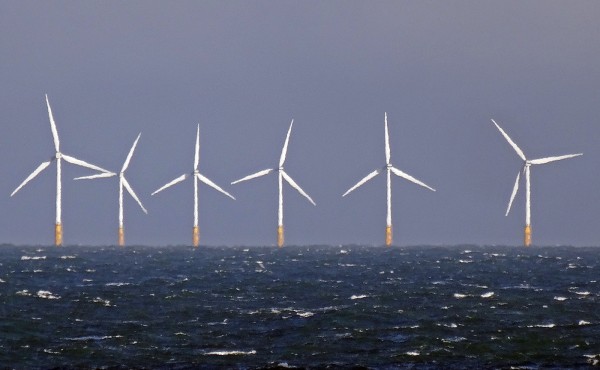 After two weeks of negotiations between the 195 countries attending the COP21 climate change conference in Paris, a deal has been reached on tackling climate change. Although the deal still has to be ratified by countries, this is a major step forward in limiting global warming. Before it can formally come into force, it must have been ratified by at least 55 countries, accounting for at least 55% of global greenhouse gas emissions.
After two weeks of negotiations between the 195 countries attending the COP21 climate change conference in Paris, a deal has been reached on tackling climate change. Although the deal still has to be ratified by countries, this is a major step forward in limiting global warming. Before it can formally come into force, it must have been ratified by at least 55 countries, accounting for at least 55% of global greenhouse gas emissions.
The deal goes much further than previous agreements and includes the following:
- A limit on the increase in global temperatures to ‘well below’ 2°C above pre-industrial levels and efforts pursued to limit it to 1.5°C.
- A recognition that the pledges already made ahead of the conference by 186 countries and incorporated into the agreement are insufficient and will only limit global temperature rise to 2.7°C at best.
- Countries to update their emissions reductions commitments every five years – the first being in 2020. Such revised commitments should then be legally binding.
- A global ‘stocktake’ in 2023, and every five years thereafter, to monitor countries’ progress in meeting their commitments and to encourage them to make deeper cuts in emissions to reach the 1.5°C goal. This requires a process of measurement and verification of countries’ emissions.
- To reach a peak in greenhouse gas emissions as soon as possible and then to begin reducing them and to achieve a balance between sources and sinks of greenhouse gases (i.e. zero net emissions) in the second half of this century.
- Developed countries to provide the poorest developing countries with $100bn per year by 2020 to help them reduce emissions. This was agreed in Copenhagen, but will now be continued from 2020 to 2025, and by 2025 a new goal above $100bn per year will be agreed.
- The development of market mechanisms that would award tradable credits for green projects and emissions reductions.
- A recognition that the ‘loss and damage’ associated with climate-related disasters can be serious for many vulnerable developing countries (such as low-lying island states) and that this may require compensation. However, there is no legal liability on developed countries to provide such compensation.
Perhaps the major achievement at the conference was a universal recognition that the problem of global warming is serious and that action needs to be taken. Mutual self interest was the driving force in reaching the agreement, and although it is less binding on countries than many would have liked, it does mark a significant step forward in tackling climate change.
But why did the conference not go further? Why, if there was general agreement that global warming should be tackled and that global temperature rise should ideally be capped at 1.5°C, was there not a binding agreement on each country to apply this cap?
There are two reasons.
First, it is very difficult to predict the exact relationship, including its timing, between emissions and global temperature rise. Even if you could make limits to emissions binding, you could not make global temperature rise binding.
 Second, even if there is general agreement about how much emissions should be reduced, there is no general agreement on the distribution of these reductions. Many countries want to do less themselves and others to do more. More specifically, poor countries want rich countries to do all the cutting while many continue to build more coal-fired power stations to provide the electricity to power economic development. The rich countries want the developing countries, especially the larger ones, such as China, India and Brazil to reduce their emissions, or at least the growth in their emissions.
Second, even if there is general agreement about how much emissions should be reduced, there is no general agreement on the distribution of these reductions. Many countries want to do less themselves and others to do more. More specifically, poor countries want rich countries to do all the cutting while many continue to build more coal-fired power stations to provide the electricity to power economic development. The rich countries want the developing countries, especially the larger ones, such as China, India and Brazil to reduce their emissions, or at least the growth in their emissions.
Then there is the difference between what countries vaguely pledge at a global conference and what they actually do domestically. Many developed countries are keen to take advantage of currently cheap fossil fuels to power economic growth. They are also still investing in alternative sources of fossil fuels, such as through fracking.
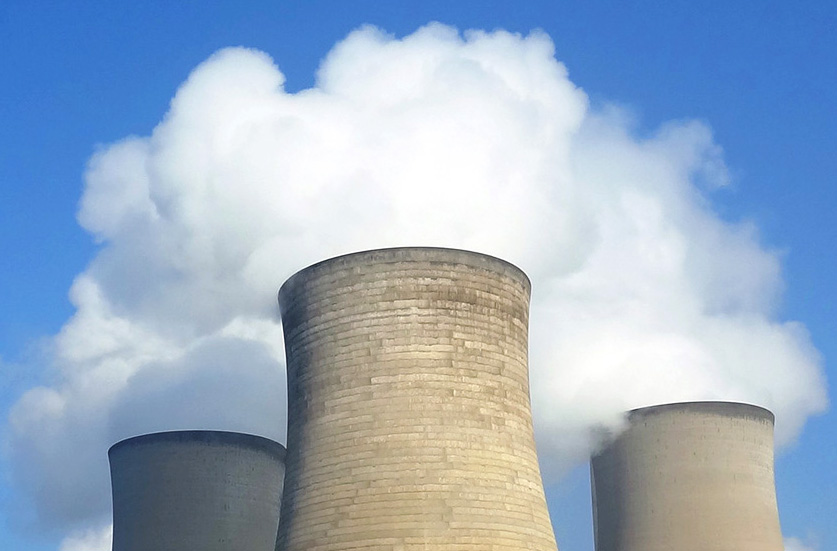 As we said in the previous blog, game theory can shed some useful insights into the nature and outcome of climate negotiations. ‘The global optimum may be for a strong agreement, binding on all countries. The Nash equilibrium, however, may be a situation where countries push for their own interests at the expense of others, with the final agreement being much more minimalistic.’
As we said in the previous blog, game theory can shed some useful insights into the nature and outcome of climate negotiations. ‘The global optimum may be for a strong agreement, binding on all countries. The Nash equilibrium, however, may be a situation where countries push for their own interests at the expense of others, with the final agreement being much more minimalistic.’
‘Minimalistic’ may be too strong a description of the outcomes of the Paris conference. But they could have been stronger. Nevertheless, judged by the outcomes of previous climate conferences, the deal could still be described as ‘historic’.
Videos
 With landmark climate accord, world marks turn from fossil fuels Reuters (13/12/15)
With landmark climate accord, world marks turn from fossil fuels Reuters (13/12/15)
 COP21 climate change summit reaches deal in Paris BBC News (13/12/15)
COP21 climate change summit reaches deal in Paris BBC News (13/12/15)
 COP21: Paris climate deal is ‘best chance to save planet’ BBC News (13/12/15)
COP21: Paris climate deal is ‘best chance to save planet’ BBC News (13/12/15)
 COP21: Climate change deal’s winners and losers BBC News, Matt McGrath (13/12/15)
COP21: Climate change deal’s winners and losers BBC News, Matt McGrath (13/12/15)
 The Five Key Decisions Made in the UN Climate Deal in Paris Bloomberg, video: Nathaniel Bullard; article: Ewa Krukowska and Alex Morales (12/12/15)
The Five Key Decisions Made in the UN Climate Deal in Paris Bloomberg, video: Nathaniel Bullard; article: Ewa Krukowska and Alex Morales (12/12/15)
 The key factors in getting a deal in Paris BBC News on YouTube, Tom Burke (13/12/15)
The key factors in getting a deal in Paris BBC News on YouTube, Tom Burke (13/12/15)
Articles
COP21 agreement: All you need to know about Paris climate change deal Hindustan Times, Chetan Chauhan (13/12/15)
COP21: Paris agreement formally adopted Financial Times, Pilita Clark and Michael Stothard (12/12/15)
Let’s hail the Paris climate change agreement and get to work Financial Times, Jeffrey Sachs (12/12/15)
COP21: Public-private collaboration key to climate targets Financial Times, Nicholas Stern (13/12/15)
Paris climate change agreement: the deal at a glance The Telegraph, Emily Gosden (12/12/15)
Climate Accord Is a Healing Step, if Not a Cure New York Times, Justin Gillis (12/12/15)
Paris Agreement Ushers in End of the Fossil Fuel Era Slate, Eric Holthaus (12/12/15)
Paris Agreement: the reaction Business Green, James Murray and Jessica Shankleman (12/12/15)
World’s First Global Deal to Combat Climate Change Adopted in Paris Scientific American, David Biello (12/12/15)
COP21: Paris climate deal ‘our best chance to save the planet’, says Obama Independent, Tom Bawden (13/12/15)
Grand promises of Paris climate deal undermined by squalid retrenchments The Guardian, George Monbiot (12/12/15)
Paris Agreement on climate change: the good, the bad, and the ugly The Conversation, Henrik Selin and Adil Najam (14/12/15)
COP21: James Hansen, the father of climate change awareness, claims Paris agreement is a ‘fraud’ Independent, Caroline Mortimer (14/12/15)
Paris climate agreement: More hot air won’t save us from oblivion Sydney Morning Herald, Peter Hartcher (15/12/15)
Draft Agreement
Adoption of the Paris Agreement United Nations Framework Convention on Climate Change (12/12/15)
Questions
- Could the market ever lead to a reduction in greenhouse gas emissions? Explain.
- What are the main strengths and weaknesses of the Paris agreement?
- Is it in rich countries’ interests to help poorer countries to achieve reductions in greenhouse gas emissions?
- How might countries reduce the production of fossil fuels? Are they likely to want to do this? Explain.
- Is a ‘cap and trade’ (tradable permits) system (a) an effective means of reducing emissions; (b) an efficient system?
- What is the best way of financing investment in renewable energy?
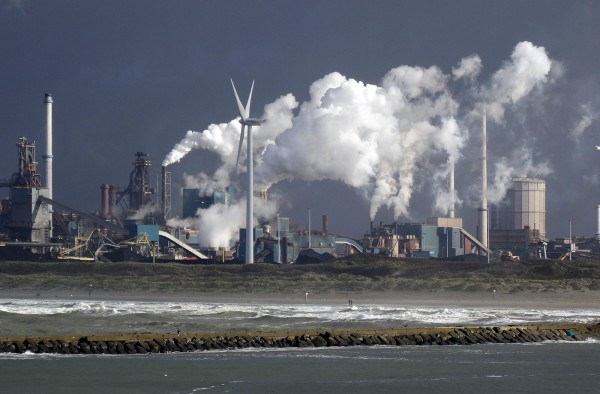 The Paris Climate Change Conference (COP21) is under way. At the opening on November 30, 150 Heads of State gathered in Paris, most of whom addressed the conference. With representatives from 195 countries and observers from a range of organisations, the conference is set to last until 11 December. Optimism is relatively high that a legally binding and universal agreement will be reached, with the aim of keeping global warming below 2°C – what is generally regarded as a ‘safe’ limit.
The Paris Climate Change Conference (COP21) is under way. At the opening on November 30, 150 Heads of State gathered in Paris, most of whom addressed the conference. With representatives from 195 countries and observers from a range of organisations, the conference is set to last until 11 December. Optimism is relatively high that a legally binding and universal agreement will be reached, with the aim of keeping global warming below 2°C – what is generally regarded as a ‘safe’ limit.
But although it is hoped that a successor to the Kyoto Protocol of 1997 will be put in place, there are many problems in getting so many countries to agree. They may all wish to reduce global warming, but there is disagreement on how it should be achieved and how the burden should be shared between countries.
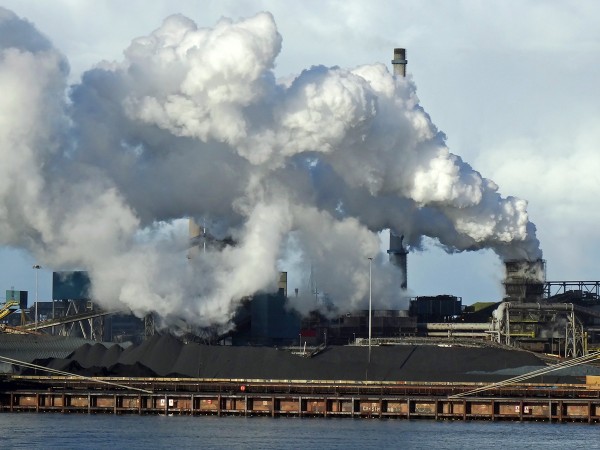 There are several difficult economic issues in the negotiations. The first is the size and impact of the external costs of emissions. When a country burns fossil fuels, the benefits are almost entirely confined to residents of that county. However, the environmental costs are largely external to that country and only a relatively small fraction is borne by that country and hardly at all by the polluters themselves, unless there is a carbon tax or other form or penalty in place. The problem is that the atmosphere is a common resource and without collective action – national or international – it will be overused.
There are several difficult economic issues in the negotiations. The first is the size and impact of the external costs of emissions. When a country burns fossil fuels, the benefits are almost entirely confined to residents of that county. However, the environmental costs are largely external to that country and only a relatively small fraction is borne by that country and hardly at all by the polluters themselves, unless there is a carbon tax or other form or penalty in place. The problem is that the atmosphere is a common resource and without collective action – national or international – it will be overused.
The second problem is one of distribution. Politicians may agree in principle that a solution is necessary which is equitable between nations, but there is considerable disagreement on what is meant by ‘equitable’ in this context. As the third Guardian article below puts it:
The most important hurdle could be over whether industrialised countries like the US, UK and Japan, which have contributed the most to the historical build-up of emissions, should be obliged to cut more than developing countries. India, on behalf of many poor countries, will argue that there must be “differentiation” between rich and poor; but the US wants targets that are applicable to all. A collision is inevitable.
A third problem is that of uncertainty. Although there is general agreement among scientists that human action is contributing to global warming, there is less agreement on the precise magnitude of the causal relationships. There is also uncertainty over the likely effects of specific emissions reductions. This uncertainty can then be used by governments which are unwilling to commit too much to emissions reductions.
 A fourth difficulty arises from the intertemporal distribution of costs and benefits of emissions reductions. The costs are born immediately action is taken. Carbon taxes or charges, or subsidies to renewables, or caps on emissions, all involve higher energy prices and/or higher taxes. The flows of benefits (or lower costs), however, of reduced emissions are not likely to be fully experienced for a very long time. But governments, whether democratic or dictatorships, tend to have a relatively short time horizon, governed by the electoral cycle or the likelihood of staying in power. True, governments may not be solely concerned with power and many politicians may have genuine desires to tackle climate change, but their political survival is still likely to be a major determinant of their actions.
A fourth difficulty arises from the intertemporal distribution of costs and benefits of emissions reductions. The costs are born immediately action is taken. Carbon taxes or charges, or subsidies to renewables, or caps on emissions, all involve higher energy prices and/or higher taxes. The flows of benefits (or lower costs), however, of reduced emissions are not likely to be fully experienced for a very long time. But governments, whether democratic or dictatorships, tend to have a relatively short time horizon, governed by the electoral cycle or the likelihood of staying in power. True, governments may not be solely concerned with power and many politicians may have genuine desires to tackle climate change, but their political survival is still likely to be a major determinant of their actions.
Of course, if there is strong public opinion in favour of action to reduce emissions, governments are likely to respond to this. Indeed, all the expressions of public support for action ahead of the conference from all around the world, do give some hope for a strong agreement at the Paris conference. Nevertheless, there is still widespread scepticism in many countries over the relationship between human action and climate change, and many argue that the costs of policies to tackle climate change exceed the benefits.
Game theory can shed some insights into the difficulties ahead for the negotiators. The global optimum may be for a strong agreement, binding on all countries. The Nash equilibrium, however, may be a situation where countries push for their own interests at the expense of others, with the final agreement being much more minimalistic.
There do, however, seem to be more reasons to be cheerful at this summit that at previous ones. But negotiations are likely to be hard and protracted over the coming days.
Videos and webcasts
 Paris Climate Conference: The Big Picture Wall Street Journal on YouTube, Jason Bellini (30/11/15)
Paris Climate Conference: The Big Picture Wall Street Journal on YouTube, Jason Bellini (30/11/15)
 Why is the Paris UN climate summit important? PwC, Leo Johnson (14/10/15)
Why is the Paris UN climate summit important? PwC, Leo Johnson (14/10/15)
 Paris climate change summit 2015: ‘the near impossible task’ Channel 4 News on YouTube, Tom Clarke (30/11/15)
Paris climate change summit 2015: ‘the near impossible task’ Channel 4 News on YouTube, Tom Clarke (30/11/15)
 COP21: Rallies mark start of Paris climate summit BBC News, David Shukman (29/11/15)
COP21: Rallies mark start of Paris climate summit BBC News, David Shukman (29/11/15)
 With climate at ‘breaking point’, leaders urge breakthrough in Paris Reuters, Bruce Wallace and Alister Doyle (1/12/15)
With climate at ‘breaking point’, leaders urge breakthrough in Paris Reuters, Bruce Wallace and Alister Doyle (1/12/15)
 COP21: Paris conference could be climate turning point, says Obama BBC News (30/11/15)
COP21: Paris conference could be climate turning point, says Obama BBC News (30/11/15)
 Leaders meet to reach new agreement on climate change BBC News, David Shukman (30/11/15)
Leaders meet to reach new agreement on climate change BBC News, David Shukman (30/11/15)
Poll: Growing Doubts Over Climate Change Causes Sky News, Thomas Moore (30/11/15)
 Paris climate protesters banned but 10,000 shoes remain The Guardian (29/11/15)
Paris climate protesters banned but 10,000 shoes remain The Guardian (29/11/15)
Articles
COP-21 climate deal in Paris spells end of the fossil era The Telegraph, Ambrose Evans-Pritchard (29/11/15)
Is there an economic case for tackling climate change? BBC News, Andrew Walker (28/11/15)
World Leaders in Paris Vow to Overcome Divisions on Climate Change Wall Street Journal, William Horobin and William Mauldin (30/11/15)
Experts discuss how to build a carbon-free energy industry The Guardian, Tim Smedley (25/11/15)
Africa could lead world on green energy, says IEA head The Guardian, Anna Leach (11/11/15)
Climate change talks: five reasons to be cheerful or fearful The Guardian, John Vidal (30/11/15)
The Paris climate change summit, explained in 4 charts The Washington Post, Philip Bump (30/11/15)
Why This Goal To Curb Climate Change ‘Is Not Ideal’ Huffington Post, Jacqueline Howard (30/11/15)
Paris climate change talks: What the different groups attending expect from these crucial meetings Independent, Tom Bawden (29/11/15)
UN Climate Change Conference: World Leaders Call For Price On CO2 Emissions Despite Uphill Battle At Paris Summit International Business Times, Maria Gallucci (30/11/15)
World Bank, six nations call for a price on carbon SBS (Australia) (1/12/15)
Uruguay makes dramatic shift to nearly 95% electricity from clean energy The Guardian, Jonathan Watts (3/12/15)
Questions
- Why is COP21 considered to be so significant?
- For what reasons is there hope for a binding agreement to limit global warming to 2°C?
- What would be the effect on global warming of the commitments made by more than 180 countries prior to the conference?
- What market failings contribute towards the problem of global warming?
- Why, if all countries want to achieve a binding agreement at the Paris conference, is it likely to be so difficult to achieve?
- Explain what is meant by a ‘Nash equilibrium’ and how the concept is relevant to international negotiations.
- Why is China investing heavily in solar power?
- Could Africa lead the world in green energy?
- Is a ‘cap and trade’ (tradable permits) system (a) an effective means of reducing emissions; (b) an efficient system?
- What is the best way of financing investment in renewable energy?
- How does the structure/order of the Paris conference differ from previous COPs? Is such a structure more likely to achieve substantial results?
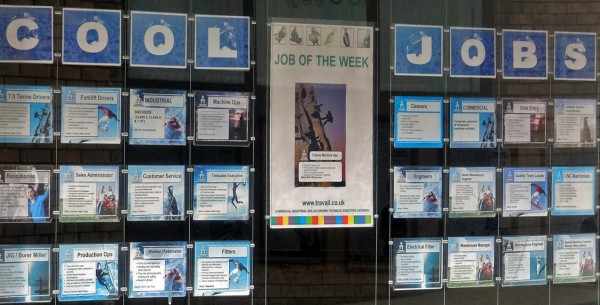 In a post last August we looked at the rising number of workers employed on ‘zero-hours’ contracts. These are contracts where there are no guaranteed minimum hours. Such contracts give employers the flexibility to employ workers as much or as little as suits the business. Sometimes it benefits workers, who might be given the flexibility to request the hours that suit them, but usually workers simply have to take the hours on offer.
In a post last August we looked at the rising number of workers employed on ‘zero-hours’ contracts. These are contracts where there are no guaranteed minimum hours. Such contracts give employers the flexibility to employ workers as much or as little as suits the business. Sometimes it benefits workers, who might be given the flexibility to request the hours that suit them, but usually workers simply have to take the hours on offer.
Latest figures published by the Office for National Statistics show that zero-hours contracts are on the increase. In 2014 quarter 4, 697,000 workers were recorded as being on zero-hours contracts.  This represents 2.3% of people in employment. Ten years ago (2004, Q4) the figures were 108,000 or 0.4%: see chart. (Click here for a PowerPoint of the chart.)
This represents 2.3% of people in employment. Ten years ago (2004, Q4) the figures were 108,000 or 0.4%: see chart. (Click here for a PowerPoint of the chart.)
Around one third of the 697,000 people on zero-hours contracts wanted more work if they could get it and most wanted it in their current job rather than having to move jobs. These people wanting more work can be classed as underemployed. They also include those not on a zero-hours contract who would like to work more if they could.
According to the ONS:
‘People on zero-hours contracts are more likely to be women, in full-time education or in young or older age groups when compared with other people in employment. On average, someone on a zero-hours contract usually works 25 hours a week.’ (See section 4 of the report for more details.)
As we saw in the earlier post, many public- and private-sector employers use such contracts, including many small and medium-sized enterprises and many well-known large companies, such as Sports Direct, Amazon, JD Wetherspoon and Cineworld. It gives them the flexibility to adjust the hours they employ people. It allows them to keep people in employment when demand is low. It also makes them more willing to take on staff when demand rises, as it removes the fear of being over-staffed if demand then falls back.
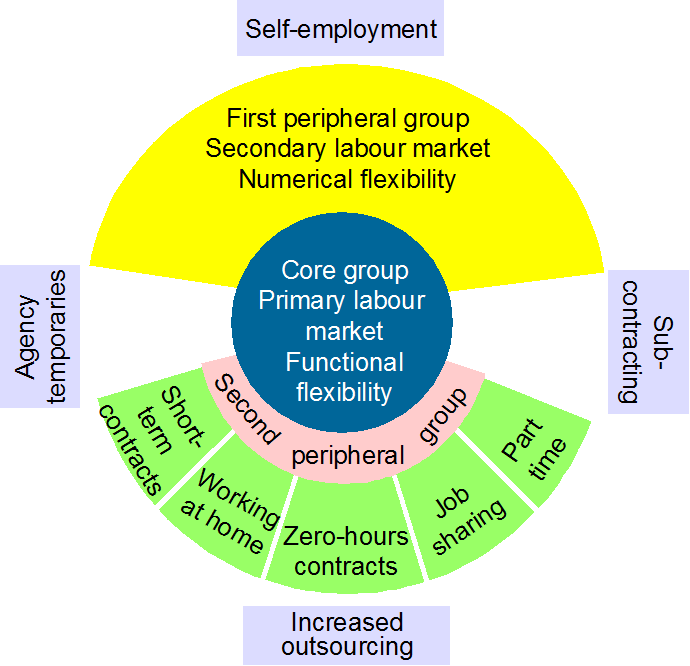 As we also saw, zero-hours contracts are not the only form of flexible working. Other examples include: ‘self-employed’ workers, contracted separately for each job they do for a company; people paid largely or wholly on commission; on-call working; part-time working, where the hours are specified in advance, but where these are periodically re-negotiated; overtime; people producing a product or service for a company (perhaps at home), where the company varies the amount paid per unit according to market conditions.
As we also saw, zero-hours contracts are not the only form of flexible working. Other examples include: ‘self-employed’ workers, contracted separately for each job they do for a company; people paid largely or wholly on commission; on-call working; part-time working, where the hours are specified in advance, but where these are periodically re-negotiated; overtime; people producing a product or service for a company (perhaps at home), where the company varies the amount paid per unit according to market conditions.
The extent of zero-hours contracts varies dramatically from one sector of the economy to another. Only 0.6% of workers in the Information, Finance and Professional sectors were on zero-hours contracts in 2014 Q4, whereas 10% in the Accommodation and Food sectors were.
The flexibility that such contracts give employers may make them more willing to keep on workers when demand is low – they can reduce workers’ hours rather than laying them off. It also may make them more willing to take on workers (or increase their hours) when demand is expanding, not having to worry about being over staffed later on.
However, many workers on such contracts find it hard to budget when their hours are not guaranteed and can vary significantly from week to week.
Articles
lmost 700,000 people in UK have zero-hours contract as main job The Guardian, Phillip Inman (25/2/15)
UK firms use 1.8m zero-hours contracts, says ONS BBC News (25/1/15)
Zero-hours contracts jump in UK Financial Times, Emily Cadman (25/2/15)
Zero-hours contracts ‘disturbingly’ hit 1.8 million in 2014 International Business Times, Ian Silvera (25/2/15)
Zero-hours contracts a reality for almost 700,000 UK workers, ONS figures show Independent, Antonia Molloy (25/1/15)
Data
Contracts with No Guaranteed Hours, Zero Hour Contracts, 2014 ONS Release (25/1/15)
Supplementary LFS data on zero hours contracts – October to December 2014 ONS dataset (25/2/15)
Analysis of Employee Contracts that do not Guarantee a Minimum Number of Hours ONS Report (25/1/15)
Questions
- Distinguish between open unemployment, disguised unemployment and underemployment?
- Distinguish between functional, numerical and financial flexibility? Which type or types of flexibility do zero-hours contracts give the firm?
- In a ‘flexible’ labour market, what forms can that flexibility take?
- Why does the Accommodation and Food sector have a relatively high proportion of people employed on zero-hours contracts?
- What are the benefits and costs to employers of using zero-hours contracts?
- If a company introduces a system of zero-hours contracts, is this in accordance with the marginal productivity theory of profit maximisation from employment?
- What are the benefits and costs to employees of working on zero-hours contracts?
- Why has the use of zero-hours contracts risen so rapidly?
- Using the ONS data, find out how the use of zero-hours contracts varies by occupation and explain why.
- Identify what forms of flexible contracts are used for staff in your university or educational establishment. Do they benefit (a) staff; (b) students?
- Consider the arguments for and against (a) banning and (b) regulating zero-hours contracts.
 In 2012, the Scottish Parliament voted to introduce a minimum unit price for alcoholic drinks. The Scotch Whisky Association along with others appealed against the legislation, but on 15 November 2017 the UK Supreme Court ruled unanimously that the legislation does not breach European Union law. It is thus likely that, after consultation, a 50p minimum unit price will be introduced, making Scotland the first country in the world to introduce minimum pricing for alcohol.
In 2012, the Scottish Parliament voted to introduce a minimum unit price for alcoholic drinks. The Scotch Whisky Association along with others appealed against the legislation, but on 15 November 2017 the UK Supreme Court ruled unanimously that the legislation does not breach European Union law. It is thus likely that, after consultation, a 50p minimum unit price will be introduced, making Scotland the first country in the world to introduce minimum pricing for alcohol. Scotland first country to introduce minimum alcohol price Channel 4 News, Fatima Manji (15/11/17)
Scotland first country to introduce minimum alcohol price Channel 4 News, Fatima Manji (15/11/17) The story of how Scotland brought in minimum pricing on alcoh The Scotsman, Ross McCafferty (15/11/17)
The story of how Scotland brought in minimum pricing on alcoh The Scotsman, Ross McCafferty (15/11/17) Supreme Court rejects challenge against plans for minimum alcohol pricing in Scotland ITV News, Peter Smith (15/11/17)
Supreme Court rejects challenge against plans for minimum alcohol pricing in Scotland ITV News, Peter Smith (15/11/17) Scotland getting the all-clear for minimum alcohol pricing as judges reject appeal Heart Scotland News, Connor Gillies (15/11/17)
Scotland getting the all-clear for minimum alcohol pricing as judges reject appeal Heart Scotland News, Connor Gillies (15/11/17)










